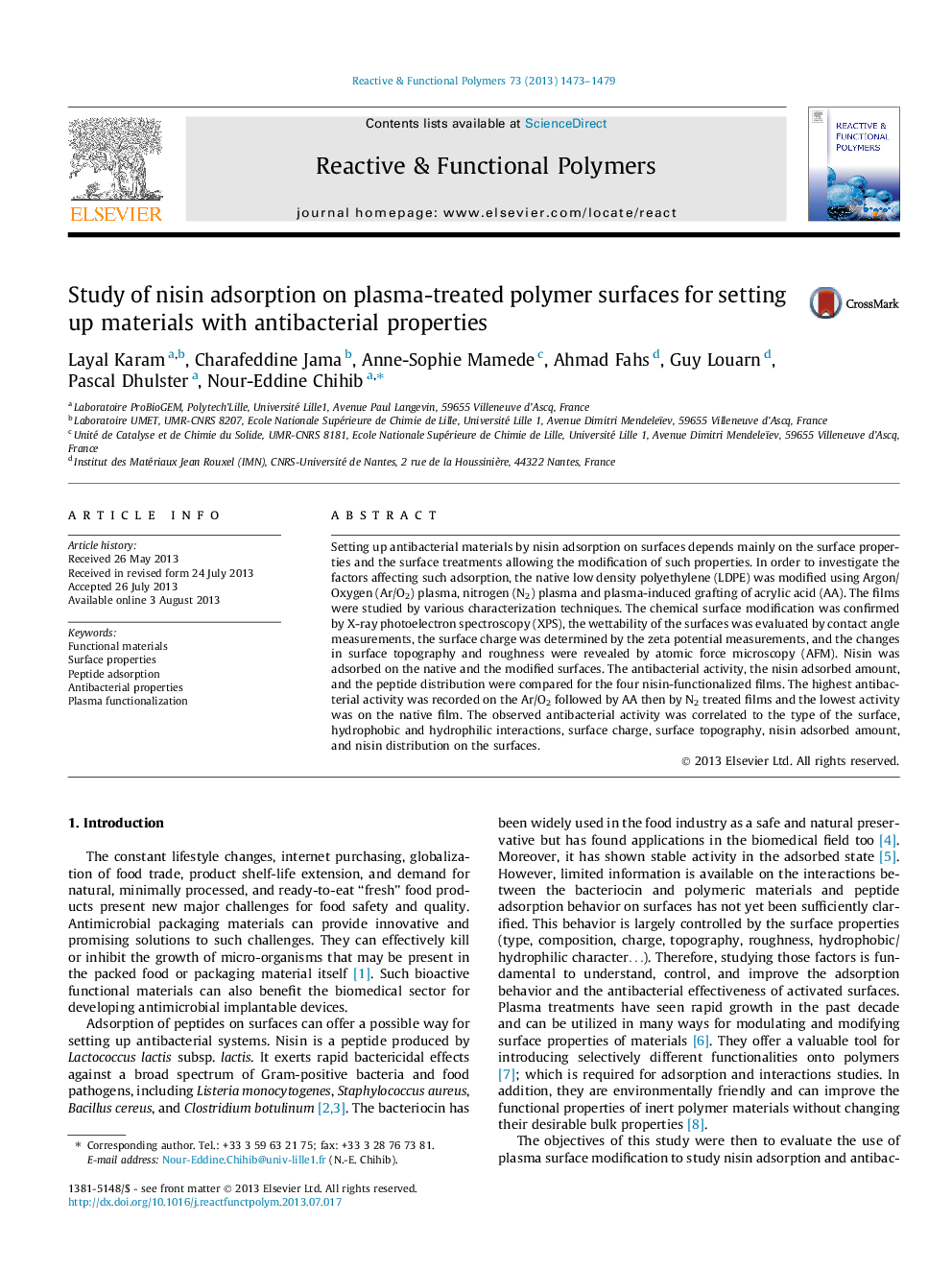| Article ID | Journal | Published Year | Pages | File Type |
|---|---|---|---|---|
| 5209981 | Reactive and Functional Polymers | 2013 | 7 Pages |
Abstract
Setting up antibacterial materials by nisin adsorption on surfaces depends mainly on the surface properties and the surface treatments allowing the modification of such properties. In order to investigate the factors affecting such adsorption, the native low density polyethylene (LDPE) was modified using Argon/Oxygen (Ar/O2) plasma, nitrogen (N2) plasma and plasma-induced grafting of acrylic acid (AA). The films were studied by various characterization techniques. The chemical surface modification was confirmed by X-ray photoelectron spectroscopy (XPS), the wettability of the surfaces was evaluated by contact angle measurements, the surface charge was determined by the zeta potential measurements, and the changes in surface topography and roughness were revealed by atomic force microscopy (AFM). Nisin was adsorbed on the native and the modified surfaces. The antibacterial activity, the nisin adsorbed amount, and the peptide distribution were compared for the four nisin-functionalized films. The highest antibacterial activity was recorded on the Ar/O2 followed by AA then by N2 treated films and the lowest activity was on the native film. The observed antibacterial activity was correlated to the type of the surface, hydrophobic and hydrophilic interactions, surface charge, surface topography, nisin adsorbed amount, and nisin distribution on the surfaces.
Keywords
Related Topics
Physical Sciences and Engineering
Chemistry
Organic Chemistry
Authors
Layal Karam, Charafeddine Jama, Anne-Sophie Mamede, Ahmad Fahs, Guy Louarn, Pascal Dhulster, Nour-Eddine Chihib,
